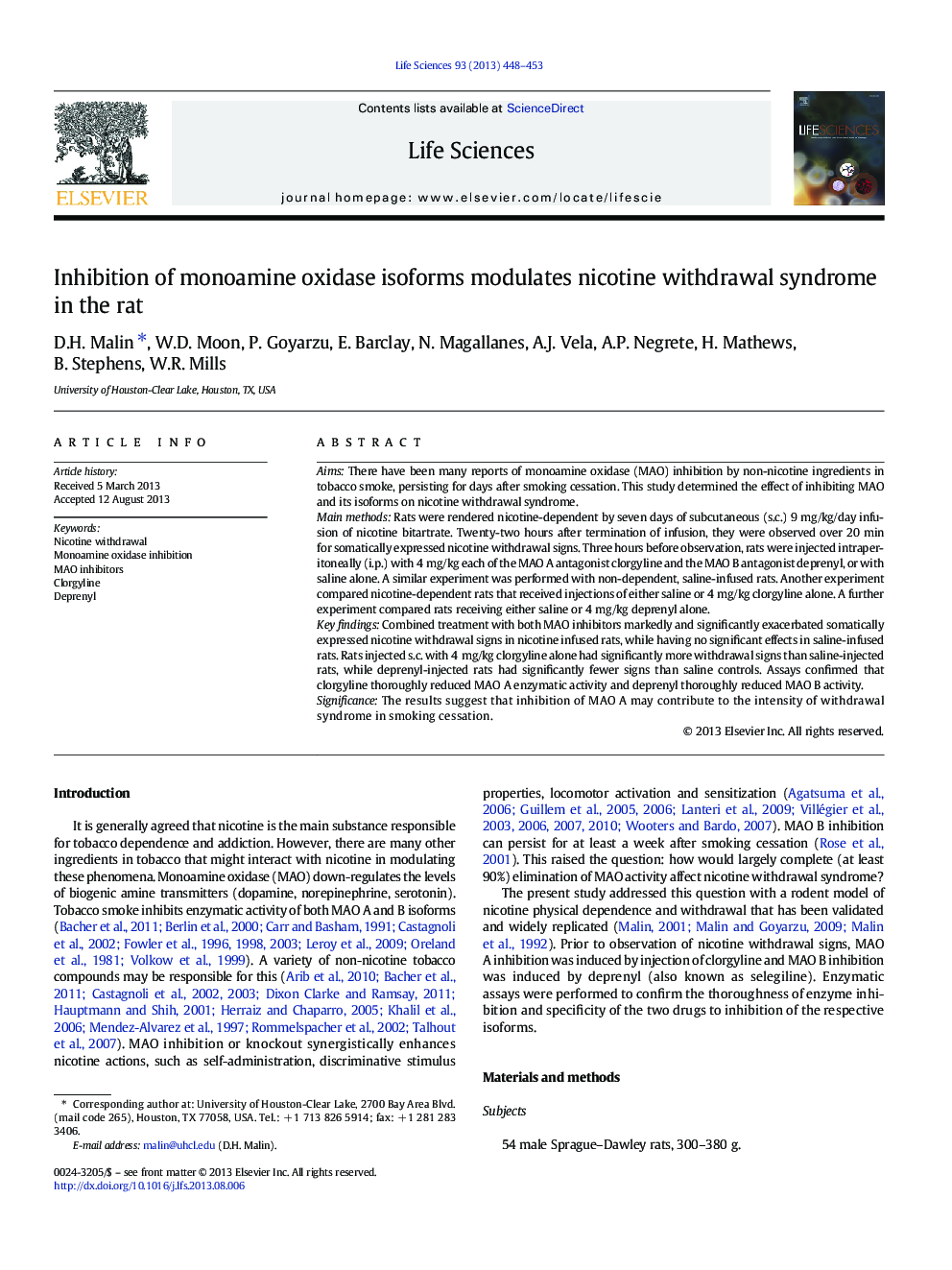| Article ID | Journal | Published Year | Pages | File Type |
|---|---|---|---|---|
| 2551533 | Life Sciences | 2013 | 6 Pages |
AimsThere have been many reports of monoamine oxidase (MAO) inhibition by non-nicotine ingredients in tobacco smoke, persisting for days after smoking cessation. This study determined the effect of inhibiting MAO and its isoforms on nicotine withdrawal syndrome.Main methodsRats were rendered nicotine-dependent by seven days of subcutaneous (s.c.) 9 mg/kg/day infusion of nicotine bitartrate. Twenty-two hours after termination of infusion, they were observed over 20 min for somatically expressed nicotine withdrawal signs. Three hours before observation, rats were injected intraperitoneally (i.p.) with 4 mg/kg each of the MAO A antagonist clorgyline and the MAO B antagonist deprenyl, or with saline alone. A similar experiment was performed with non-dependent, saline-infused rats. Another experiment compared nicotine-dependent rats that received injections of either saline or 4 mg/kg clorgyline alone. A further experiment compared rats receiving either saline or 4 mg/kg deprenyl alone.Key findingsCombined treatment with both MAO inhibitors markedly and significantly exacerbated somatically expressed nicotine withdrawal signs in nicotine infused rats, while having no significant effects in saline-infused rats. Rats injected s.c. with 4 mg/kg clorgyline alone had significantly more withdrawal signs than saline-injected rats, while deprenyl-injected rats had significantly fewer signs than saline controls. Assays confirmed that clorgyline thoroughly reduced MAO A enzymatic activity and deprenyl thoroughly reduced MAO B activity.SignificanceThe results suggest that inhibition of MAO A may contribute to the intensity of withdrawal syndrome in smoking cessation.
